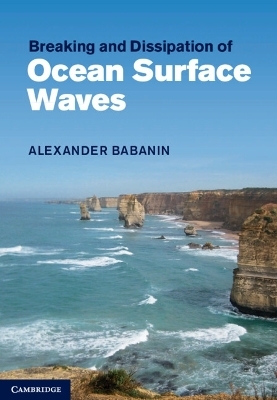
Breaking and Dissipation of Ocean Surface Waves
Cambridge University Press (Verlag)
978-1-107-00158-9 (ISBN)
Wave breaking represents one of the most interesting and challenging problems for fluid mechanics and physical oceanography. Over the last fifteen years our understanding has undergone a dramatic leap forward, and wave breaking has emerged as a process whose physics is clarified and quantified. Ocean wave breaking plays the primary role in the air-sea exchange of momentum, mass and heat, and it is of significant importance for ocean remote sensing, coastal and ocean engineering, navigation and other practical applications. This book outlines the state of the art in our understanding of wave breaking and presents the main outstanding problems. It is a valuable resource for anyone interested in this topic, including researchers, modellers, forecasters, engineers and graduate students in physical oceanography, meteorology and ocean engineering.
Alexander Babanin is a Professor in the Faculty of Engineering and Industrial Sciences at Swinburne University of Technology, Victoria. His Bachelors degree in Physics and Masters degree in Physical Oceanography are from the Faculty of Physics at Moscow State University, and his Ph.D. on Spectral Characteristics of Surface Wind Wave Fields is from the Marine Hydrophysical Institute, Sevastopol. His research interests involve wind-generated waves, air-sea interaction and ocean turbulence, including dynamics of surface ocean waves, wave breaking and dissipation, air-sea boundary layer, extreme oceanic conditions, wave statistics, ocean mixing and remote sensing.
1. Introduction; 2. Definitions for the wave breaking; 3. Detection and measurements of the wave breaking; 4. Fully non-linear analytical theories for surface waves and numerical simulations of the wave breaking; 5. Wave breaking probability; 6. Wave breaking severity; 7. Energy dissipation across the wave spectrum; 8. Non-dissipative effects of the breaking on the wave field; 9. Role of wave breaking in the air-sea interaction; 10. Conclusions: what else do we need to know about the wave breaking?; References; Index.
| Zusatzinfo | 6 Tables, black and white; 23 Halftones, unspecified; 23 Halftones, black and white; 112 Line drawings, black and white |
|---|---|
| Verlagsort | Cambridge |
| Sprache | englisch |
| Maße | 180 x 255 mm |
| Gewicht | 1080 g |
| Themenwelt | Naturwissenschaften ► Geowissenschaften ► Geologie |
| Naturwissenschaften ► Geowissenschaften ► Hydrologie / Ozeanografie | |
| Naturwissenschaften ► Geowissenschaften ► Meteorologie / Klimatologie | |
| ISBN-10 | 1-107-00158-7 / 1107001587 |
| ISBN-13 | 978-1-107-00158-9 / 9781107001589 |
| Zustand | Neuware |
| Haben Sie eine Frage zum Produkt? |
aus dem Bereich


